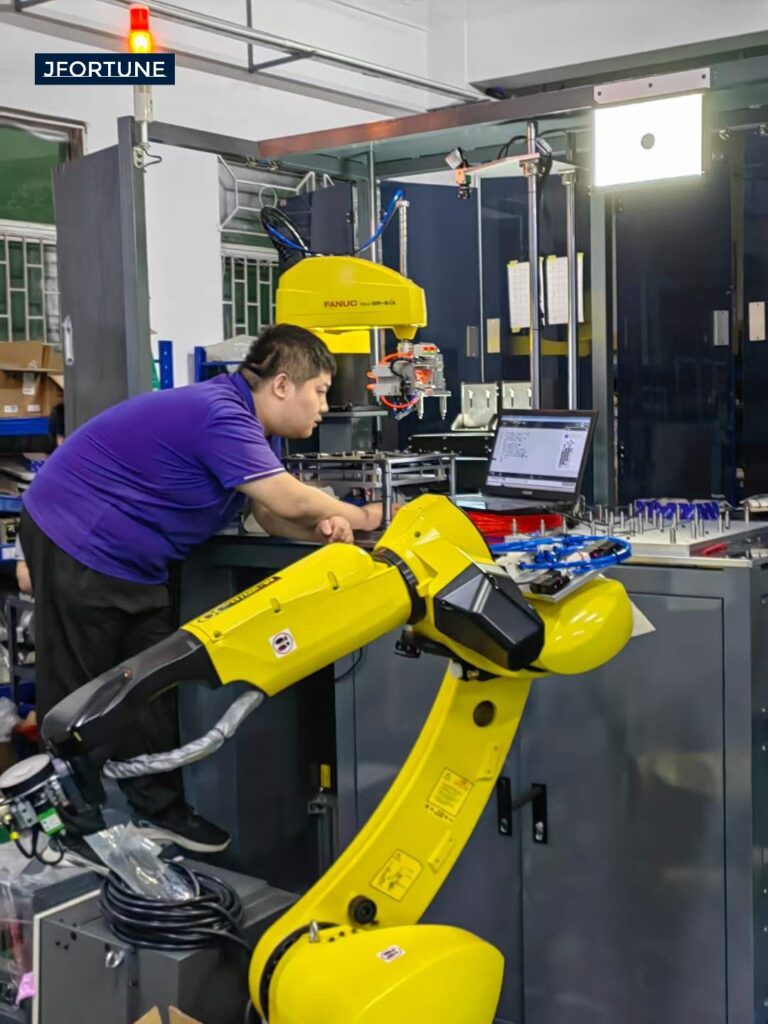In the dynamic realm of industrial manufacturing, the advent and integration of robotics have marked a new epoch of efficiency, intelligence, and automation. Robots have become ubiquitous across a vast array of processes including material handling, welding, cutting, assembling, grinding, and painting. The automotive industry, known for its intricate manufacturing workflows, stands at the forefront of adopting these robotic innovations. In China, a significant portion—50% of industrial robots—finds application in automotive manufacturing, with a majority focusing on welding tasks. Amidst this robotic prevalence, the Robotic Tool Changers has emerged as a pivotal enhancement, particularly accentuating the production lines of new energy vehicle manufacturers with its adaptability and efficiency.
Empowering Automotive Manufacturing
The automotive sector, with its complex manufacturing processes, demands broad application scopes, high application standards, and mature technological integration. The robot quick changer meets these demands head-on by providing a versatile and efficient solution that significantly elevates production capabilities, especially in the realm of new energy vehicles. Over half of the robotic quick-change systems are now being utilized in new energy vehicle factories, addressing critical applications such as spot welding, high-frequency signal welding of plastic components, and air path transmission.
Navigating the Digital Transformation
The manufacturing industry’s ongoing shift towards digitalization has propelled robots towards becoming more compact, lightweight, flexible, and intelligent. This transition is crucial in accommodating the rapid changes and demands of modern manufacturing landscapes. The robotic end of arm tooling exemplifies this innovation by allowing robots to swiftly swap between tools and tasks, thereby enhancing their usability and versatility in production settings.
Integration with Sensory Technologies
A notable trend in robotic evolution is the collaborative use of robots with advanced sensory technologies, such as vision, force, and tactile sensors. This synergy enables robots to perform with higher precision and adaptability, further amplified by the introduction of Automatic Tool Changers. These devices facilitate seamless tool transitions, allowing robots to efficiently switch between different manufacturing tasks and significantly improve production line flexibility and output.
Impact on New Energy Vehicle Production
The shift towards new energy vehicles has been a driving force in adopting more advanced manufacturing technologies, including Robotic Tool Changers. These innovations allow for the more efficient assembly of batteries, electric drivetrains, and other specialized components that are critical to new energy vehicles. The quick changer, in particular, enables the fast reconfiguration of production lines to accommodate different models and components, a vital feature in the rapidly evolving new energy vehicle sector.
Conclusion
The integration of robot changer in the automotive industry underscores a broader shift towards more adaptive, efficient, and sophisticated manufacturing processes. By enhancing the versatility and efficiency of robots, these devices play a critical role in supporting the automotive industry’s complex requirements, particularly in the production of new energy vehicles. As robots continue to evolve in the direction of miniaturization, lightweight design, flexibility, and intelligence, the robot tool changer stands as a testament to the transformative power of digitalization and automation in manufacturing. This innovation not only propels the automotive industry forward but also sets a new standard for manufacturing excellence in the digital age.
